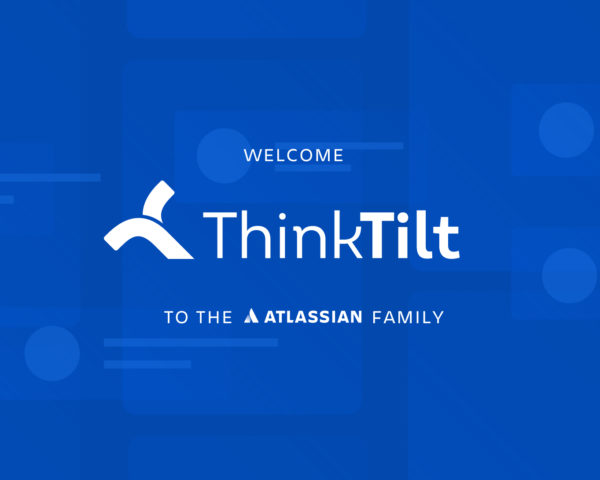Atlassian customers take center stage at High Velocity: ITSM World Tour
Global IT leaders showcased their reimagining of service delivery for a new digital, remote-first world.
“For those [TEAMS] about to rock, we salute you.”
Those may have not been the exact lyrics from AC/DC’s 1981 hit, but they certainly fit the theme of Atlassian’s first-ever ITSM-focused virtual conference on November 10th. The High-Velocity: ITSM World Tour, a concert-themed event – hosted by musician and comedian Reggie Watts of “The Late, Late Show with James Corden” – included sessions about the future of ITSM and the latest feature advancements to Jira Service Management.
But if anyone stole the spotlight, it was global IT leaders from Atlassian customers Belong, Ginkgo Bioworks, Lufthansa Technik, Saint-Gobain, and CBS. From carbon-neutral broadband networks to cutting-edge biotechnology applications, rockstars from each of these enterprises took the stage to share how Jira Service Management drives exceptional service experiences for both customers and employees in a digital, remote-first world.
Belong: powering a greener, more connected world
Belong is Australia’s first certified carbon-neutral mobile and internet provider. Based on their belief that internet and mobile services should be straightforward and less impactful to the earth, they’re working towards making our world a more inclusive place by giving Australians the tools to reach across the planet at the touch of a button.
Like many companies, Belong is moving towards a decentralized approach to operations. However, they’re unique because the teams that build new features or products continue to support them in production. For Danni Garcia, a Technology Enablement Product Owner, this means service delivery has to be customer-focused, automated, and aligned with agile ways of working.
“We’re [moving] away from the traditional operations model where everyone comes to us for service requests or incidents or monitoring … [we’re] trying to empower teams to really take ownership of the processes and of the operations of their environments, whether that’s in a development or customer-facing environment,” she says.
For Garcia and her team, Atlassian fit their culture of work and digital transformation goals. The team rolled out Jira Service Management in just three months and didn’t have to wait long to see the impact.
We saw a 57% improvement from last month in a metric we call MTTA or ‘Mean Time to Acknowledge’ – how long it takes a developer or a delivery team to pick up a ticket and respond to it,” says Garcia. “That’s improved to 85% this month. We put that down to the fact that Jira Service Management is such a simple tool to use that our teams are adopting these processes so quickly.
– Danni Garcia, Technology Enablement Product Owner at Belong
As it turns out, high-velocity teams are a lot like bands: they perform best when everyone is empowered to play their part. For Belong, improving visibility with Jira Service Management has led to greater team autonomy and ownership.
“The main thing about autonomy is giving people access to the right operational data so that they are in control and in charge and feel that responsibility,” says Garcia. “Traditionally, people were just coming to us for all this information. Now, all the teams have created monitoring and other dashboards. We look at this as, ‘Wow, they’ve done it themselves!’ A great indicator that Jira Service Management is being used well.”
Ginkgo Bioworks: building the products of tomorrow
Ginkgo Bioworks is building a platform to enable customers to program cells as easily as computers, unlocking biotechnology applications across diverse markets, from food and agriculture to industrial chemicals and pharmaceuticals. They also actively support a number of COVID-19 response efforts.
At this rapidly growing and newly public company, all teams are challenged to triple output and halve costs every year. And when each project requires input across multiple teams, visibility is critical to quick management requests and changes.
“When you step back and look at it, we’re really a collection of services. There’s upwards of twenty different services in our lab, from sequencing, high-throughput screening, proteomics, and on and on,” says Dave Treff, Head of Digital Operations. “It was very obvious that help desks could help remove bottlenecks across those different areas, as well as legal and finance. Everyone needs some way to manage this – you can’t grow by just hiring people.”
Realizing that development and operations groups were using two different tools for service management, Treff and his team sought to consolidate around a single solution. Time-to-value and cultural fit were the primary reasons Ginkgo Bioworks partnered with Atlassian and chose Jira Service Management over legacy tools.
All your ITSM competitors are these monolithic solutions that start at a list price of half a million dollars and need an army of consultants to get started. We needed something that would scale with us today. And we don’t have to change our business to use it. We’re plugging it into where we live and work – that’s really different from the rest of the products on the market.
– Dave Treff, Head of Digital Operations, Ginkgo Bioworks
Just like a newly released album climbing the charts, word traveled fast.
“Within days, we had other teams coming to us and saying, ‘Hey, I need to manage requests the same way you do,'” says Bruce Kozuma, Senior Group Product Manager. “We built it and they were there immediately. Teams from environmental, health, and safety (EHS), lab operations, automation teams, and even business development – all wanting to use Jira Service Management.”
Moving forward, the team is looking to extend visibility by improving asset management for lab equipment that’s constantly on the move.
“What’s different about Ginkgo compared to most biotech companies is about half of the pieces of equipment get moved every year from lab to lab to support a program or customer. Scientists will literally move that equipment around on their own and it’s our job to figure out where it went,” says Treff.
Jira Service Management provides that much-needed visibility.
Saint-Gobain: modern ITSM for a manufacturing giant
Better value and visibility aren’t limited to a fast-moving, newly public company like Ginkgo Bioworks. Originally founded in 1665 as the royal French manufacturer of mirrors for King Louis XIV, Saint-Gobain is now a multinational manufacturing company with over 167,000 employees across 70 countries. This might make them one of the oldest manufacturing and materials companies in the world, but their ITSM strategy is state-of-the-art.
During the global pandemic, PMO Tools Manager Rachid Laghzaouni led a major initiative to replace ServiceNow with Jira Service Management for 20,000 internal end-users. Prior to this, they used Jira Software for development and ServiceNow for ITSM. It meant dealing with “two different systems, which was quite painful,” says PMO Tools Manager Rachid Laghzaouni. In addition to cutting costs by 70% in the first year alone by switching from ServiceNow (projecting an 82% reduction in year 3), Saint-Gobain has also benefited from significant productivity gains with development and operations on a single platform.
With Jira Service Management, everything started to flow… We could finally link projects and use dashboards between our service management solution and Jira Software. This high-level cockpit view helped us deal with the rollout and improved the productivity of everyone.
– Rachid Laghzaouni, PMO Tools Manager, Saint-Gobain
Saint-Gobain migrated the entire IT department and half of their end-users from ServiceNow to Jira Service Management in a matter of weeks. They plan to complete the rollout to all 20,000 end-users by mid-November. “We didn’t even need to train them,” says Rachid. To start, the team plans to use incident, problem, and change management; the service catalog; and the knowledge base, as well as KPI functionality.
Lufthansa Technik: taking off with a new solution
Lufthansa Technik, the leading provider of aircraft maintenance, repair, and overhaul services in the aerospace and defense sector, switched to Jira Service Management to provide full IT support for all their subsidiaries. For Wesley Morris, Head of IT, Americas, priorities included improving visibility and scaling operations – which meant they had outgrown their old ITSM solution.
“We were facing challenges with our former system…Asset management was done in one system. Documentation and knowledge-based topics were done in Word, which was difficult to maintain and manage. It was important to have a single ecosystem where we could do all of these activities,” he says.
As Morris and his team built up their customer base, they were getting more and more service requests. Similar to Ginkgo Bioworks and Belong, ensuring a fast and successful implementation was paramount.
“We wanted to make sure that this product was robust enough so that on day one of our implementation, we could take over support for other companies,” said Morris. “The same day we went live with Jira Service Management, we took on an additional 350 customers from one of our business partners and everything has worked out great.”
Looking forward, the team is planning to roll out Jira Service Management to ease administrative burdens for HR, facilities, accounting, and other shared services.
CBS: creative teams adopt an agile way of work
Many guests of the High Velocity: ITSM World Tour spoke about extending service management processes to other parts of the enterprise. CBS is a prime example of this strategy in action, using Jira Service Management to adapt to the rapid pace of the always-on media landscape.
As a leading network in the United States with over 210 affiliates and between 12-18 hours of programming a day, CBS’s internal marketing department functions much like an agency within the company, specializing in media advertising for the network brand and its programming. The teams are composed of people supporting different assignments across on-air promotions, social media, key art, imagery, radio spots – anything involved in the marketing of a show.
With the rise of social media, advertising has become much more complex as compared to the traditional ad units of television’s golden age. Different delivery formats, sizes, and specs required a whole new technical process to create, leading Vice President of Brand Identity and Systems Mitch Cardwell to search for a new solution to support how they got work done.
“We got into a room one day and we pulled all the documents in for just one show. We put them out on a table and it was dozens of spreadsheets and emails and tech-spec documents. We realized that there had to be a better way,” said Cardwell. “So we started down a journey of trying to figure out how to simplify this – to have all groups speaking the same language and looking at the same screen.”
Cardwell’s group already had good foundational processes across teams. They even adopted an agile mindset with creative work organized into sprints similar to a development team, which is why Jira Service Management was a great fit.
“I think one of the most important things we were looking for was being able to alter the process dynamically. So, we wanted to be able to create highly customized processes that worked with the way that we worked, but then be able to alter those when we needed to and not have to go through a very elaborate process to change our project management system,” says Cardwell. “Within CBS marketing, we were already working in a lot of codified processes with some technological support around project management, but adding Jira Service Management on top of that was a game changer.”
The integration between Jira Software and Jira Service Management means teams have visibility into the entire process, helping workflow between pods and handle the growing number of external requests from various departments across the enterprise.
Jira Service Management really, really is the cherry on the top of an amazing suite of products that allows us to close that final link to our clients and to the teams that work with us externally, to help us get them what they need. I’ve been with the company for over 15 years, and for the first time, because of Atlassian, we have an accurate measure of our inputs and outputs in a very granular way. We have realized sizable increases in our throughput and bandwidth with the use of these tools.
– Mitch Cardwell, Vice President of Brand Identity and Systems, CBS
35,000+ customers rely on Atlassian’s innovative approach to ITSM
Atlassian continues to innovate in the ITSM space, a market where we see tremendous momentum and growth. Strategic acquisitions that bolster Jira Service Management include ThinkTilt ProForma for low-code/no-code form building, Mindville Insight for asset and configuration management, Opsgenie for incident management, Automation for Jira for code-free automation, Halp for conversational ticketing, and Chartio for analytics and data visualization. Additional rapid, in-house innovations such as a native knowledge base powered by Confluence, delegated administration, and advancements to our asset and configuration management database are designed to help more than 35,000 customers power service management across their enterprises and enable every team to operate at high velocity.
Watch on demand
Nothing tops a live show, but you can catch up on all the sessions you missed from the High-Velocity: ITSM World Tour below or register for our upcoming Lightning Talk series.




